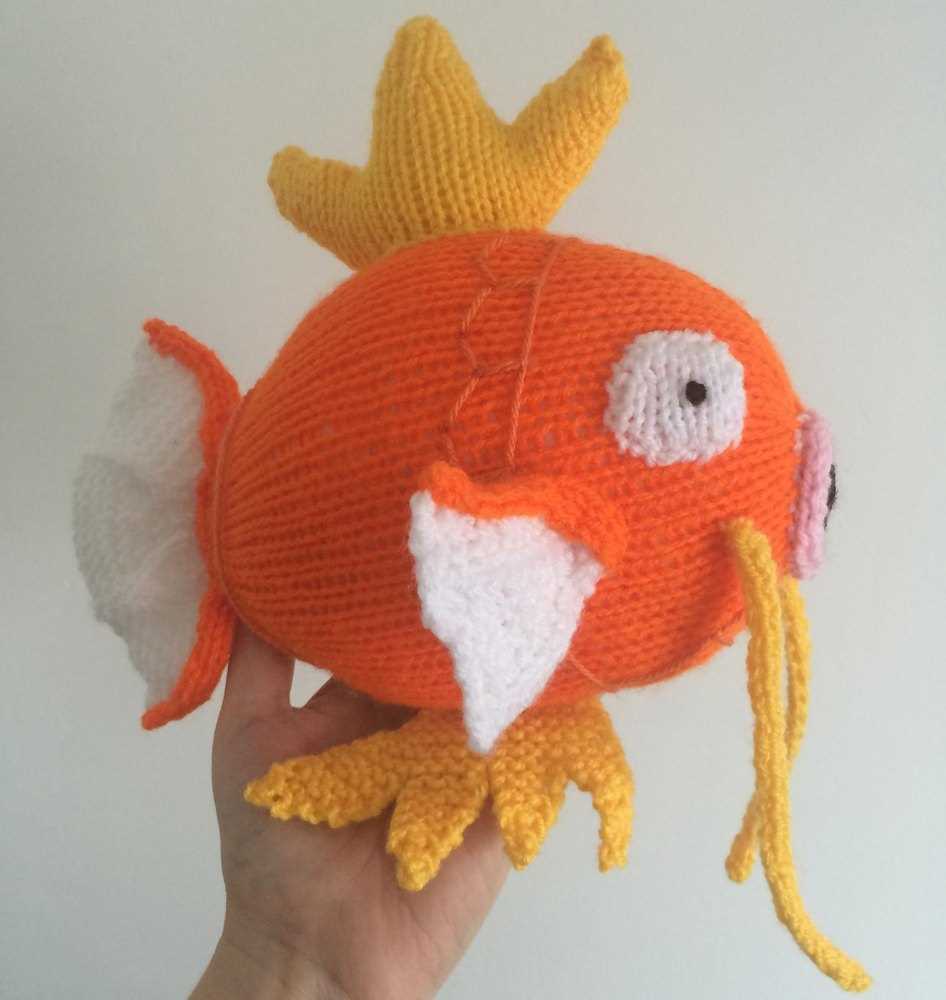
Are you looking for a fun and creative project to take up your knitting needles? Look no further! This free knitted fish toy pattern is the perfect project for both beginners and experienced knitters alike.
Whether you’re a seasoned knitter or just starting out, this knitted fish toy pattern is a great way to hone your knitting skills and create a unique and adorable toy. Plus, it’s a fun and educational project to make for children or as a gift for a pet owner.
With this free pattern, you’ll be able to create a cute and cuddly fish toy that is sure to bring joy and entertainment to kids of all ages. The pattern is easy to follow and includes step-by-step instructions, making it suitable for knitters of all skill levels.
Why choose a knitted fish toy?
Knitted fish toys are a popular choice among children and adults alike for several reasons. These handmade toys offer a unique and charming design that stands out from mass-produced plastic or stuffed animals.
One of the main advantages of choosing a knitted fish toy is the quality and durability it offers. Knitted toys are often made with high-quality materials and craftsmanship, ensuring that they will withstand years of play and remain in excellent condition.
Additionally, knitted fish toys provide a sensory experience for children as they can feel the softness of the yarn and different textures used in the design. This tactile stimulation can enhance the child’s sensory development and provide a comforting sensation during playtime.
Another reason to choose a knitted fish toy is its versatility. These toys can be used for various purposes, such as a cuddly companion, a decorative item in a nursery, or even as a prop in educational activities. The unique design of a knitted fish toy can spark creativity and imagination in children, allowing them to explore different play scenarios and storytelling.
Furthermore, knitted fish toys often come with a personal touch. They can be customized with different colors, patterns, and even embroidered details, making each toy unique and special. This personalization adds an extra level of meaning and connection to the toy, whether it is a gift for a loved one or a cherished item for oneself.
Lastly, choosing a knitted fish toy supports small businesses and independent artisans. By purchasing a handmade toy, you are directly contributing to the livelihood of the maker and helping to sustain traditional crafting techniques. This conscious and ethical choice not only brings joy to you or your loved one but also makes a positive impact on the individual and the community behind the creation of the toy.
In summary, a knitted fish toy offers a charming design, durability, sensory stimulation, versatility, personalization, and the opportunity to support independent artisans. These factors make it a worthwhile and meaningful choice for both children and adults.
Benefits of Free Knitted Toy Patterns
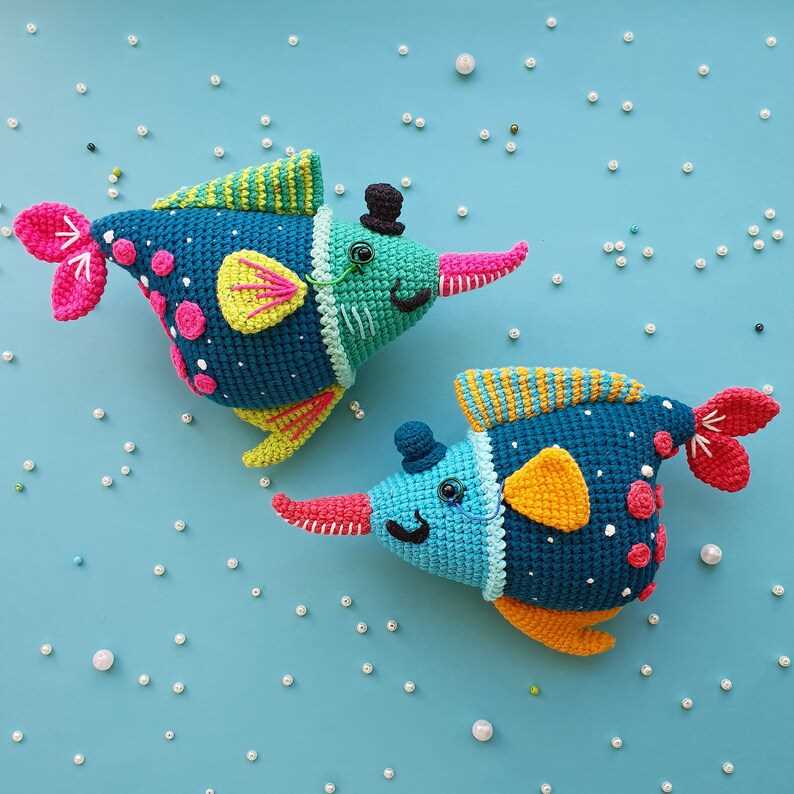
There are several benefits to using free knitted toy patterns. Whether you are an experienced knitter or a beginner, these patterns offer a great opportunity to exercise your creativity and make unique toys for yourself or your loved ones.
- Cost-effective: One of the main advantages of free knitted toy patterns is that they are cost-effective. Unlike purchasing ready-made toys, knitting your own toys allows you to save money on buying expensive toys.
- Personalization: With free knitted toy patterns, you have the freedom to personalize your toys. You can choose the colors, yarns, and embellishments that match your preferences or the preferences of the person you are making the toy for.
- Unique and One-of-a-kind: Knitting your own toys enables you to create unique and one-of-a-kind items. Instead of having the same mass-produced toy as everyone else, you can have a toy that stands out and reflects your individual style and creativity.
- Relaxation and Stress Relief: Knitting is known to be a relaxing and stress-relieving activity. The repetitive motion of knitting can help calm the mind and promote a sense of well-being. By following free knitted toy patterns, you can enjoy the therapeutic benefits of knitting while creating something beautiful and meaningful.
- Gift Giving: Free knitted toy patterns are also great for gift giving. Handmade toys hold a special sentimental value and can be cherished by both children and adults. By knitting toys using free patterns, you can create thoughtful and heartfelt gifts for birthdays, holidays, or special occasions.
In conclusion, using free knitted toy patterns brings several benefits. From cost savings to personalization and the joy of creating unique items, these patterns provide an opportunity to showcase your knitting skills and create meaningful toys for yourself or others.
Customize Your Knitted Fish Toy with Creativity
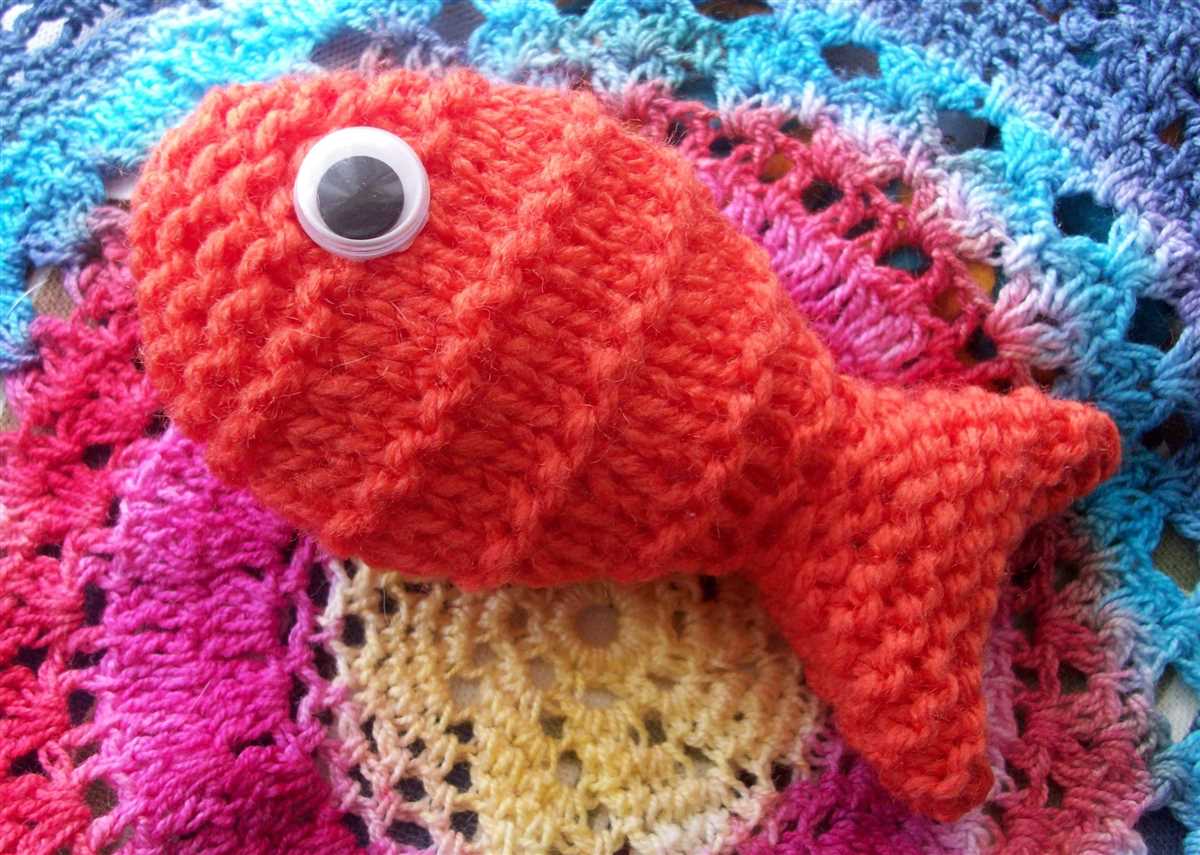
Creating your own knitted fish toy allows you to showcase your creativity and add a personal touch to your projects. Whether you’re an experienced knitter or just starting out, customizing your toy with unique colors, patterns, and embellishments gives you the opportunity to make it truly one-of-a-kind.
Color: One of the easiest ways to customize your knitted fish toy is by selecting your own color scheme. You can choose colors that match your personal preferences or create a themed toy, such as using ocean-inspired blues and greens. Experiment with different color combinations to see which ones you like best.
Pattern: While the original free knitted fish toy pattern provides a great starting point, you can also modify it to create a toy that reflects your own style. Add stripes, polka dots, or even a unique stitch pattern to make your fish toy stand out. You can also adjust the size of the toy by changing the number of stitches or rows in the pattern.
Embellishments: Don’t be afraid to get creative with the finishing touches on your knitted fish toy. Consider adding buttons for eyes, a contrasting color for the mouth, or even some embroidery to give your toy extra details. These small additions can make a big difference in the overall look of your fish toy.
Customization Ideas:
- Use sparkly yarn to create a magical fish toy.
- Add a keychain or loop at the top to turn your toy into a hanging decoration.
- Personalize your fish toy by embroidering the recipient’s name on it.
- Experiment with different textures by mixing different types of yarn.
- Create a rainbow-themed fish toy by using a different color for each section.
Remember, the beauty of knitting is that you have the freedom to customize and make each project your own. Let your imagination run wild and have fun creating a unique knitted fish toy that you can cherish or give as a special gift to someone you care about.
Cost-effectiveness
When it comes to creating knitted toys, cost-effectiveness is an important consideration. By using a free knitted fish toy pattern, you can save money on purchasing a toy from a store. The pattern provides step-by-step instructions on how to create the toy using affordable materials such as yarn and knitting needles.
One of the advantages of using a free knitted fish toy pattern is that it allows you to customize the toy to your liking. You can choose the colors and patterns of the yarn to match your personal style or the recipient’s preferences. This level of customization adds value to the toy without increasing the cost.
Materials
- Yarn in various colors
- Knitting needles
- Stuffing material
- Yarn needle
Instructions
- Begin by casting on the required number of stitches.
- Follow the pattern instructions to knit the body of the fish.
- Use different colors of yarn to create the tail, fins, and other details of the fish.
- Once the knitting is complete, stuff the toy with filling material to give it a soft and cuddly feel.
- Finish by sewing up any openings and weaving in loose ends.
By following a free knitted fish toy pattern, you can create a cost-effective and personalized toy that will bring joy to both children and adults. Whether you are a seasoned knitter or a beginner, this pattern provides a clear and easy-to-follow guide to create a charming knitted fish toy.
Eco-friendly
Living an eco-friendly lifestyle is becoming increasingly important in today’s world. With concerns over climate change and environmental degradation, many people are looking for ways to reduce their carbon footprint and make more sustainable choices in their everyday lives.
One way to do this is by embracing eco-friendly materials and products. Instead of using single-use plastics, for example, you can opt for reusable alternatives like stainless steel water bottles or glass food containers. These small changes can make a big difference in reducing waste and minimizing the amount of plastic that ends up in landfills or polluting our oceans.
Another aspect of eco-friendly living is supporting sustainable agriculture and ethical farming practices. This means choosing organic produce, supporting local farmers, and buying products that are free from pesticides and genetically modified organisms (GMOs).
When it comes to knitting and crafting, eco-friendly choices can also be made. One option is to use natural yarns made from organic fibers, such as cotton, bamboo, or hemp, which are grown without the use of harmful chemicals. These yarns are not only better for the environment, but they also tend to be softer and more breathable than synthetic options.
- Furthermore, recycling and upcycling are important concepts in eco-friendly crafting.
- You can repurpose old clothing or fabric scraps to create new projects, reducing waste and giving new life to materials that might otherwise end up in the trash.
- Additionally, choosing patterns that encourage minimalism and simplicity can also be eco-friendly.
- Patterns that require fewer materials or use simple stitches can help reduce waste and make the most of the resources you have.
By making eco-friendly choices in our crafting and daily lives, we can all contribute to a more sustainable future and help protect the planet for generations to come.
Materials and tools required
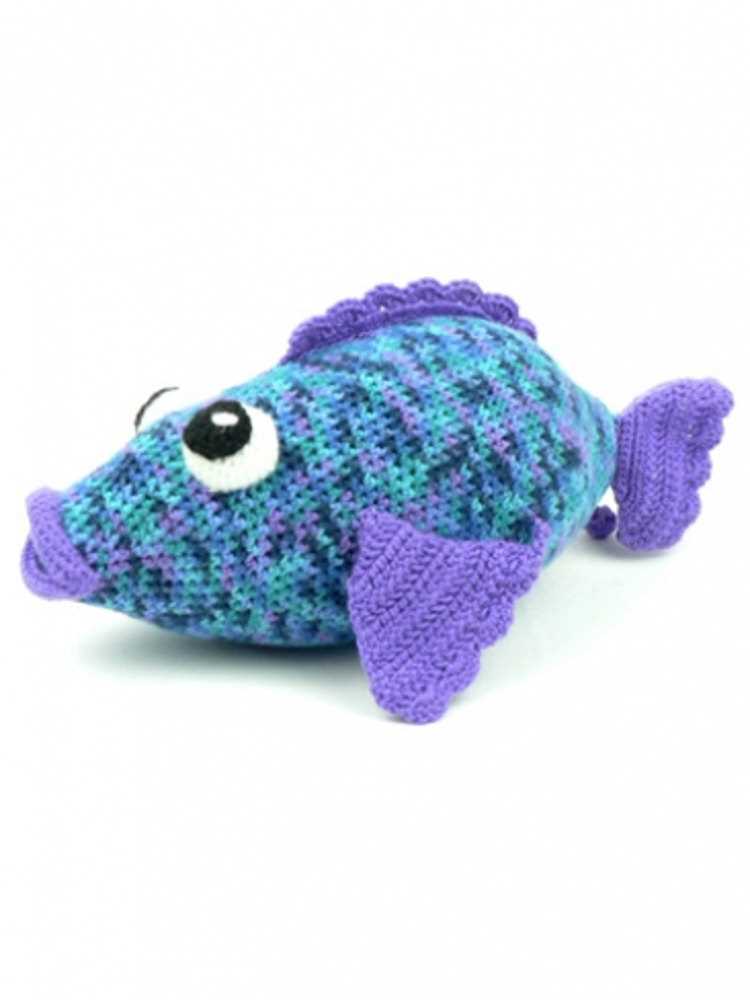
In order to create the knitted fish toy, you will need the following materials and tools:
Materials:
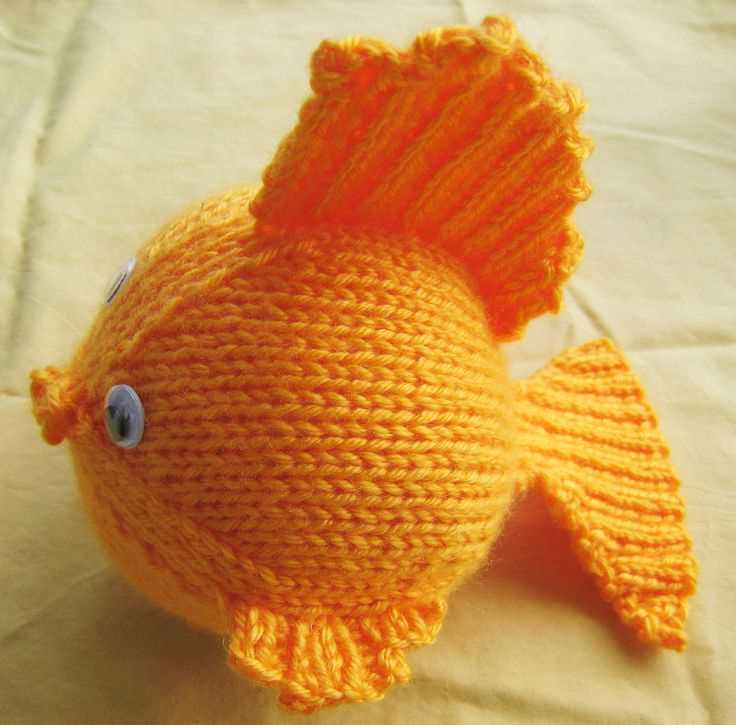
- Yarn – Choose a soft and brightly colored yarn for the body of the fish. Using different colors can also add more variety to your knitted fish toy.
- Stuffing – You will need stuffing material to fill the fish toy, giving it a plump and cuddly feel.
- Knitting needles – Select the appropriate size of knitting needles based on the thickness of yarn you are using. This will ensure the stitches are even and tight.
- Yarn needle – This needle will be used for sewing and weaving in ends.
- Scissors – A pair of scissors will be needed to cut the yarn and trim any excess.
Tools:
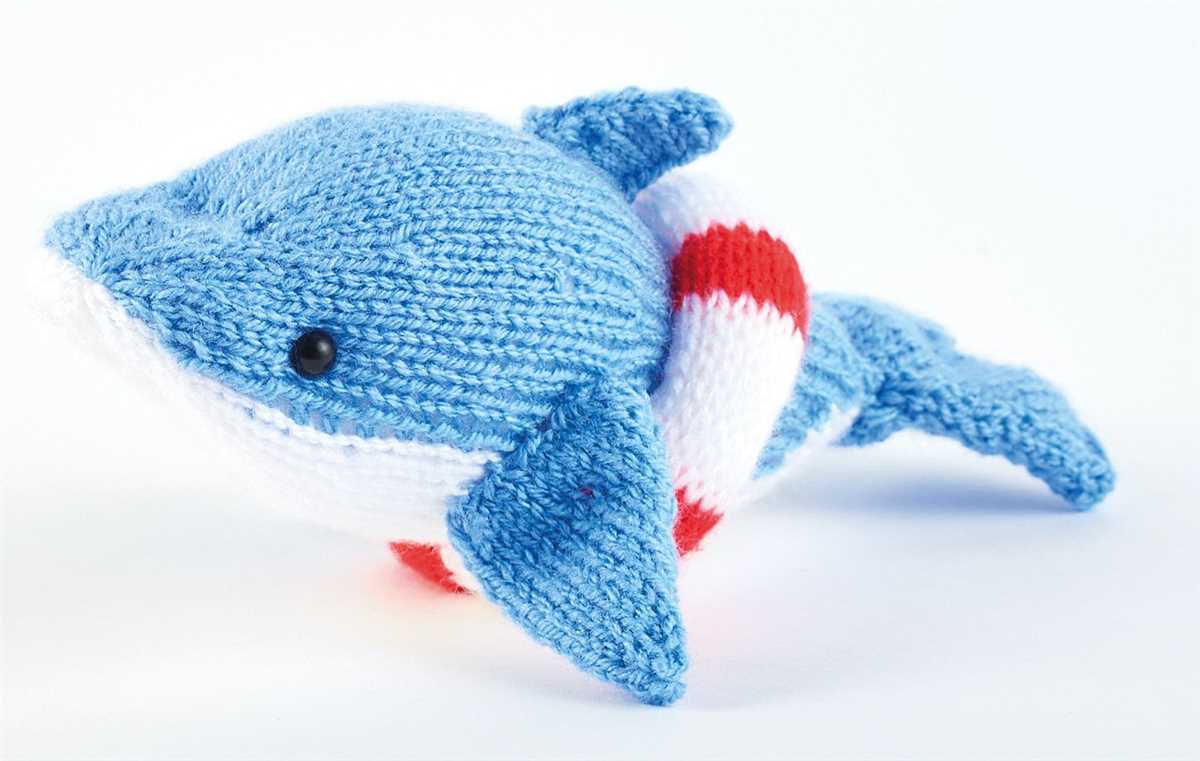
- Stitch markers – These little markers can be helpful in keeping track of your stitches and rounds.
- Row counter – A row counter can help you keep count of the number of rows you knit, especially if the pattern requires a specific number of rows.
- Tape measure – A tape measure allows you to check the dimensions of your toy, ensuring it matches the required size in the pattern.
- Embroidery thread or safety eyes – Depending on your preference, you can use embroidery thread or safety eyes to give your knitted fish toy eyes and facial features.
Make sure to gather all the necessary materials and tools before starting your knitting project. With everything prepared, you’ll be ready to bring your knitted fish toy to life!
Step-by-step instructions for knitting the fish toy
If you’re looking for a fun and easy knitting project, why not try making a cute fish toy? Here are step-by-step instructions to guide you through the process:
Materials needed:
- Yarn in your choice of colors
- Knitting needles in the appropriate size for your yarn
- Yarn needle
- Toy stuffing
- Scissors
Instructions:
- Start by casting on 30 stitches, using the long-tail cast-on method. This will create the body of the fish.
- Knit each row using the stockinette stitch until your work measures about 6 inches.
- Decrease stitches on the next row by knitting 2 stitches together across the row. This will create the tapered tail of the fish.
- Continue knitting in stockinette stitch until your work measures about 9 inches.
- Next, increase stitches by knitting into the front and back of each stitch across the row. This will create the fish’s stomach.
- Continue knitting in stockinette stitch until your work measures about 12 inches.
- Decrease stitches on the next row by knitting 2 stitches together across the row. This will create the head of the fish.
- Knit 2 more rows in stockinette stitch.
- Bind off all stitches, leaving a long tail for sewing.
- Use the yarn needle to weave in any loose ends.
- Stuff the fish toy with toy stuffing, making sure to fill it evenly.
- With the yarn needle and the long tail, sew the tail of the fish together.
- Embroider eyes and a mouth on the head of the fish using embroidery floss or yarn.
- Your knitted fish toy is now complete!
This fish toy pattern is great for beginners and is a perfect way to practice your knitting skills. You can customize your fish by using different colors of yarn or adding embellishments like sequins or buttons. Have fun knitting and enjoy your adorable fish toy!
Tips and Tricks for Successful Knitting
Knitting is a popular craft that allows you to create beautiful and unique items with just a pair of needles and some yarn. However, it can be challenging for beginners to get started and achieve successful results. Whether you’re a beginner or an experienced knitter, here are some tips and tricks that can help you improve your knitting skills.
1. Choose the Right Yarn and Needles
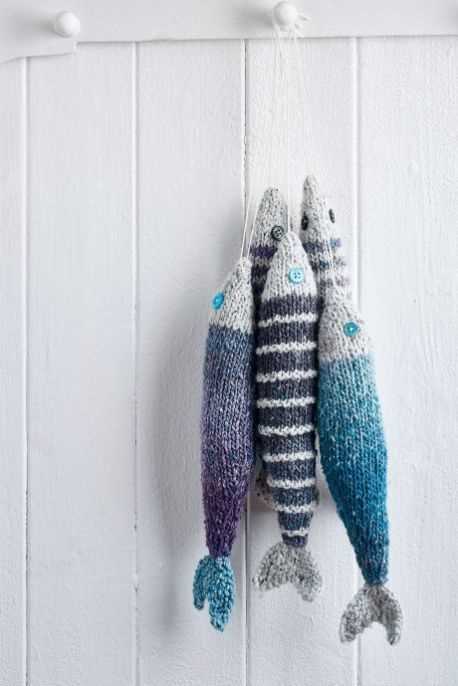
The first step to successful knitting is choosing the right yarn and needles for your project. The thickness of the yarn and the size of the needles will determine the final outcome of your knitting. Make sure to check the yarn label for recommended needle sizes and choose a yarn that suits your project’s requirements. Using the right yarn and needle combination will ensure that your stitches are even and your finished item has the desired drape and texture.
2. Practice Proper Tension
One of the most important aspects of knitting is maintaining consistent tension in your stitches. Tension refers to the tightness or looseness of your knitting, and it can greatly affect the final appearance of your project. Practice knitting with a relaxed grip and avoid pulling the yarn too tightly or too loosely. Regular practice will help you develop good tension control, resulting in neat and uniform stitches.
3. Count Your Stitches
Counting stitches is crucial for keeping track of your progress and ensuring that your pattern turns out correctly. It’s easy to lose count, especially when working on complex patterns or rows with numerous increases and decreases. Use stitch markers or make a habit of counting your stitches at the end of each row to avoid mistakes. This will save you time and frustration in the long run.
4. Fix Mistakes Correctly
Mistakes happen even to the most experienced knitters, but it’s important to know how to fix them without unraveling your entire project. Learn how to read your knitting to identify mistakes and understand how to “tink” (undoing stitches one by one) or “frog” (knitting back multiple rows) when necessary. Having a few basic techniques up your sleeve will save you from having to start over from scratch.
5. Block and Finish Your Knitting
Once you’ve completed your knitting, take the time to block and finish your project. Blocking involves wetting or steaming your knitted item to shape and set the stitches, giving it a more professional and polished look. Finishing touches, such as weaving in loose ends and sewing up seams, are also essential for achieving a clean and tidy final result. Don’t rush this final step – it can make a world of difference in the overall appearance of your knitted item.
By following these tips and tricks, you’ll be well on your way to becoming a successful knitter. Remember to practice regularly and be patient with yourself as you learn and improve your skills. Happy knitting!
Ideas for customizing your knitted fish toy
Once you have completed knitting your fish toy, you may want to add some personalized touches to make it even more unique. Here are some ideas for customizing your knitted fish toy:
1. Embroidered details
Add embroidered details to give your fish toy more personality. You can use different colored yarns to create eyes, mouth, or scales. Consider adding intricate patterns or designs to the body or fins of the fish using embroidery stitches.
2. Beading
Add some sparkle to your fish toy by incorporating beads into the design. You can use small beads to embellish the fins or body of the fish. Consider using different colors and sizes of beads to create a unique pattern or design.
3. Appliqué
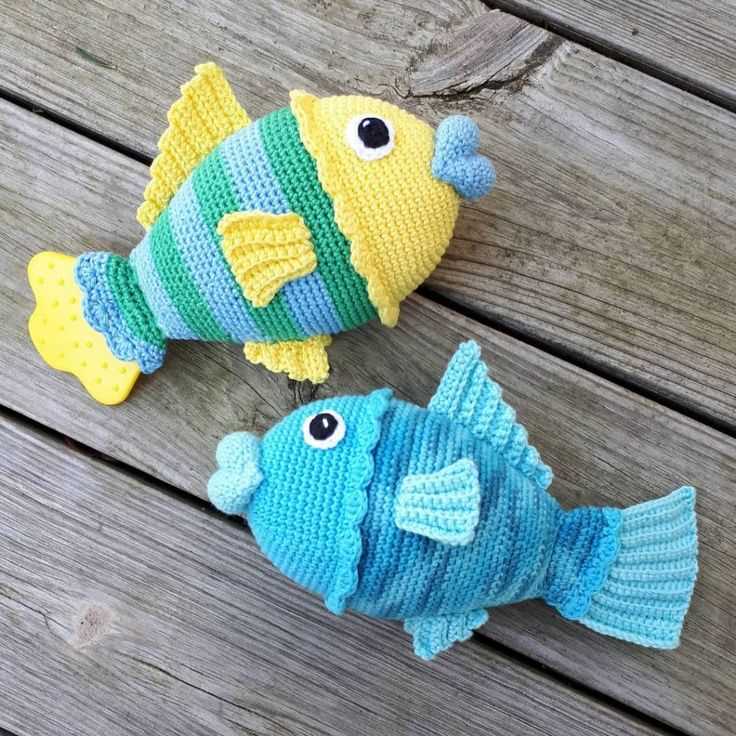
Another way to customize your knitted fish toy is by adding appliqué details. You can cut out different shapes or designs from fabric or felt and sew them onto the body or fins of the fish. This will add texture and visual interest to your toy.
4. Ribbon or fabric bows
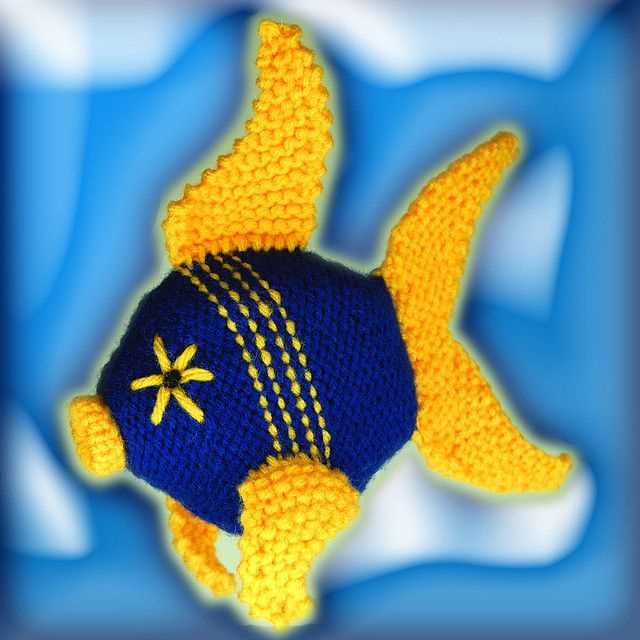
Add a touch of elegance to your fish toy by attaching ribbon or fabric bows. You can tie a small bow around the neck or attach a larger bow to the tail of the fish. Consider using different patterns or colors of ribbons or fabrics to create a unique look.
5. Accessories
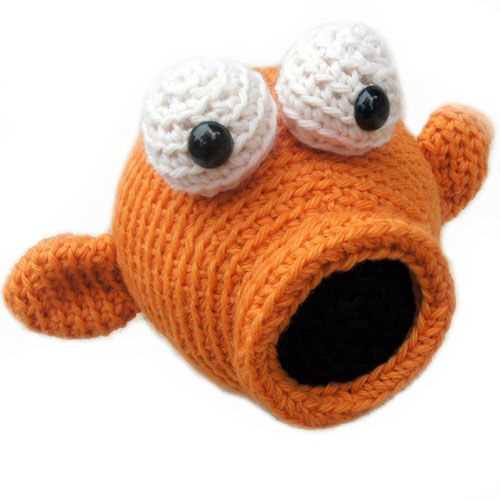
You can also customize your fish toy by adding small accessories. For example, you can knit a tiny scarf or hat to dress up your fish toy for different seasons or occasions. You can also attach small charms or buttons to the body or fins of the fish for added decoration.
These are just a few ideas to get you started on customizing your knitted fish toy. Use your creativity and imagination to make your toy truly one-of-a-kind!
Safety precautions for using knitted toys
When using knitted toys, it is important to take certain safety precautions to ensure the well-being of children and to prevent any accidents or injuries. Here are some key safety measures to keep in mind:
1. Choose age-appropriate toys
Ensure that the knitted toys you give to children are suitable for their age group. Some toys may have small parts that can be a choking hazard for young children, so it is important to carefully read the toy’s label or instructions to determine the appropriate age range.
2. Inspect the toys regularly
Regularly inspect the knitted toys for any signs of damage, such as loose stitches, missing eyes or buttons, or unraveling yarn. If you notice any damage, repair or replace the toy immediately to prevent any further harm.
3. Wash the toys regularly
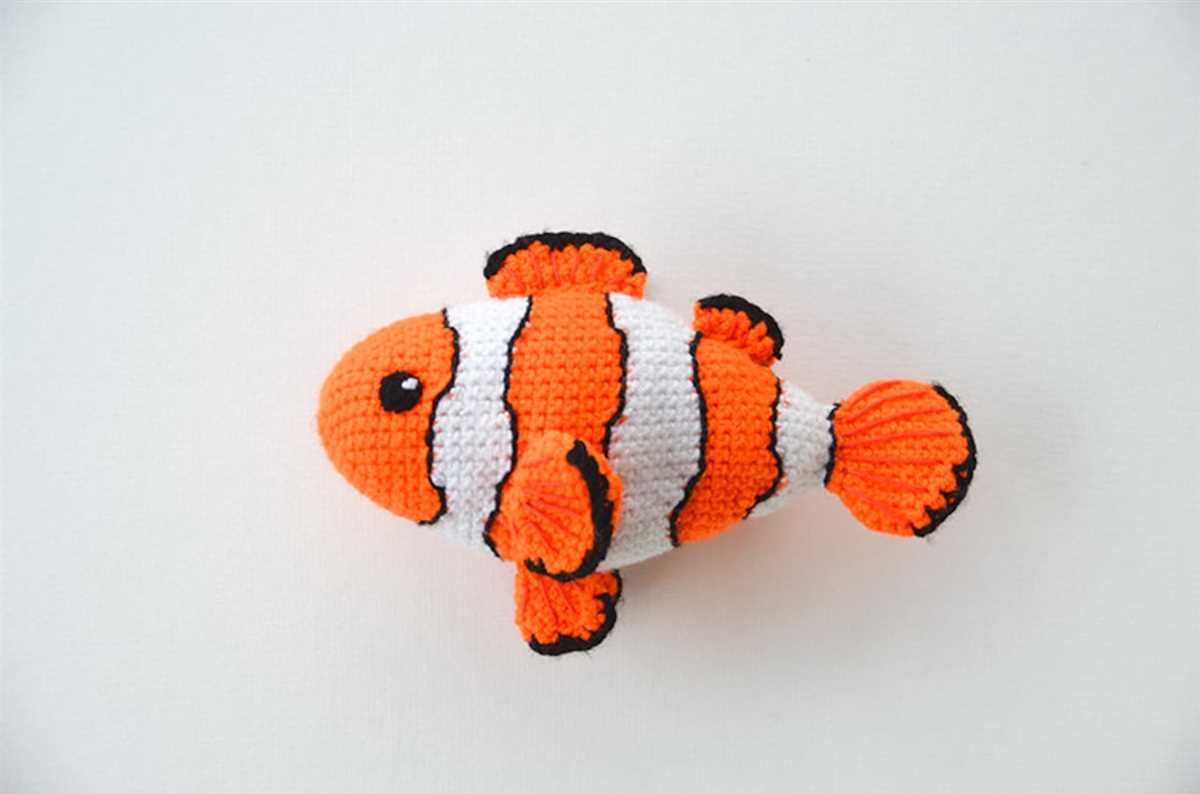
Knitted toys can accumulate dirt and germs over time, especially if they are used frequently. It is important to wash them regularly according to the manufacturer’s instructions. This will help to keep the toys clean and hygienic for children to play with.
4. Supervise young children
Always supervise young children while they are playing with knitted toys, especially those that have small parts. This will ensure that they are using the toys safely and will allow you to intervene if any potential hazards arise.
5. Store the toys properly
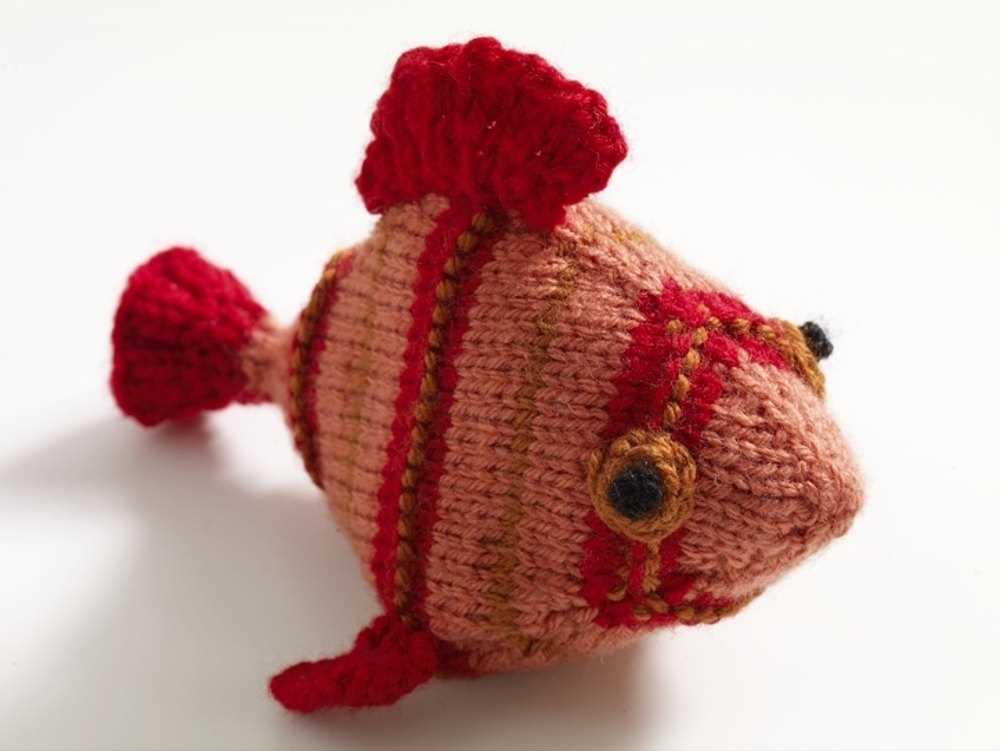
When the knitted toys are not being used, store them in a safe place where children cannot reach them. This will prevent any accidental ingestions or injuries that could occur if the toys are left lying around.
6. Be cautious with decorative elements
Some knitted toys may have decorative elements like ribbons, bows, or beads. While these can enhance the toy’s appearance, they can also pose a choking hazard. Use your discretion and remove any decorative elements that may be unsafe for children.
By following these safety precautions, you can ensure that knitted toys provide hours of safe and enjoyable play for children of all ages.
Care and Maintenance of Knitted Fish Toys
Knitted fish toys are not only cute and fun for cats to play with, but they also require some care and maintenance to ensure their longevity and safety. Here are some tips on how to take care of your knitted fish toys:
Cleaning
Knitted fish toys can accumulate dirt, dust, and cat hair over time, so it’s important to clean them regularly. Hand-washing is the best method to clean knitted toys. Fill a basin with lukewarm water and a gentle detergent. Gently submerge the toy in the water and use your hands to clean it. Rinse it thoroughly with clean water to remove any soap residue. Squeeze out excess water and reshape the toy while it’s still wet. Leave it to air dry completely before giving it back to your cat.
Storage
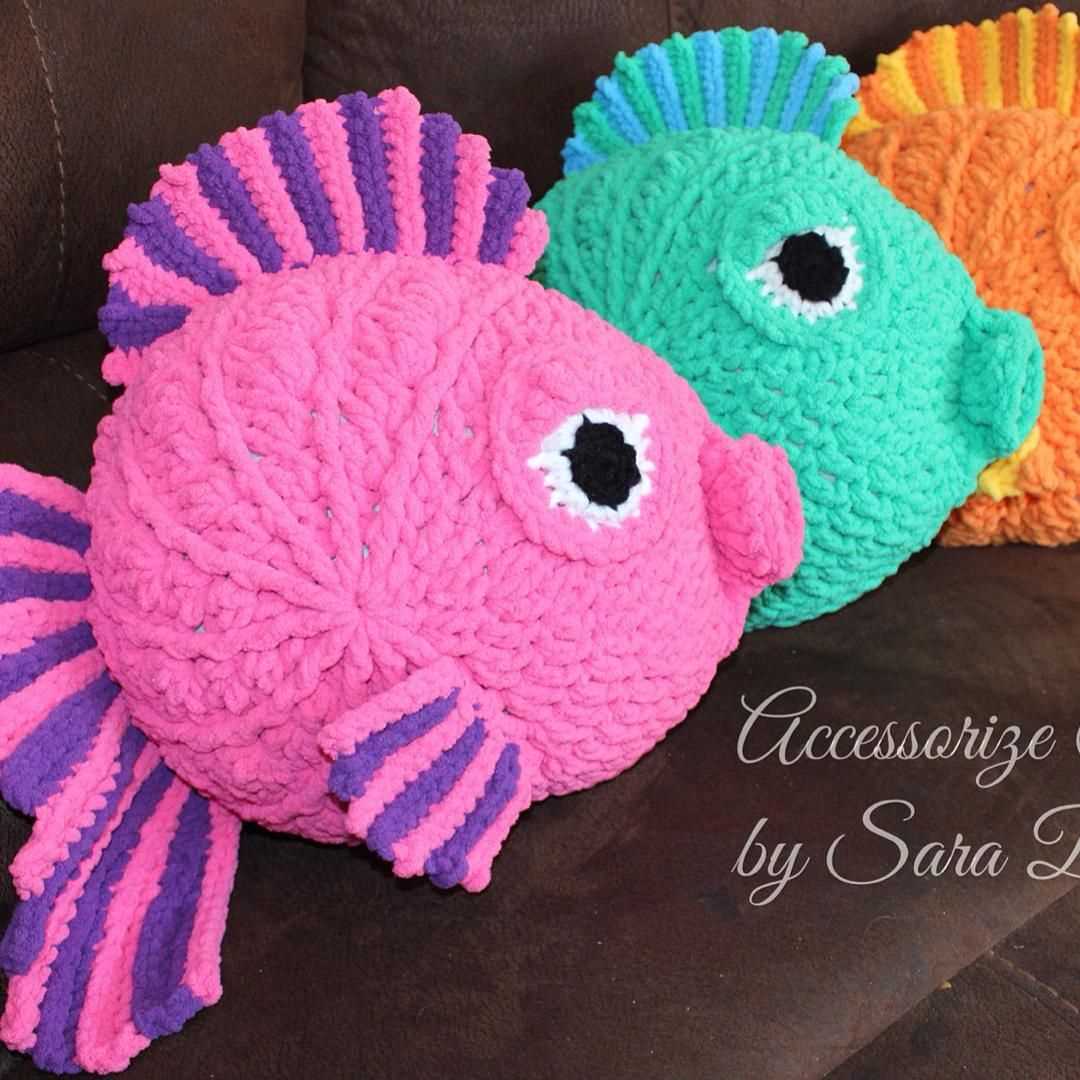
When your cat is not playing with the knitted fish toy, it’s best to store it in a clean and dry place. Avoid exposing it to direct sunlight for long periods as it can cause the colors to fade. Keep the toy away from any sharp objects that can potentially damage or tear it. Storing the toy in a sealable bag or container can also help prevent dust and dirt from accumulating on it.
Inspecting
Regularly inspect your knitted fish toy for any signs of wear and tear, such as loose threads or stuffing coming out. If you notice any damage, it’s important to repair it as soon as possible to prevent any hazards. Use a needle and matching yarn to sew up any small holes or tears. If the damage is extensive, it might be better to replace the toy with a new one.
Final Thoughts
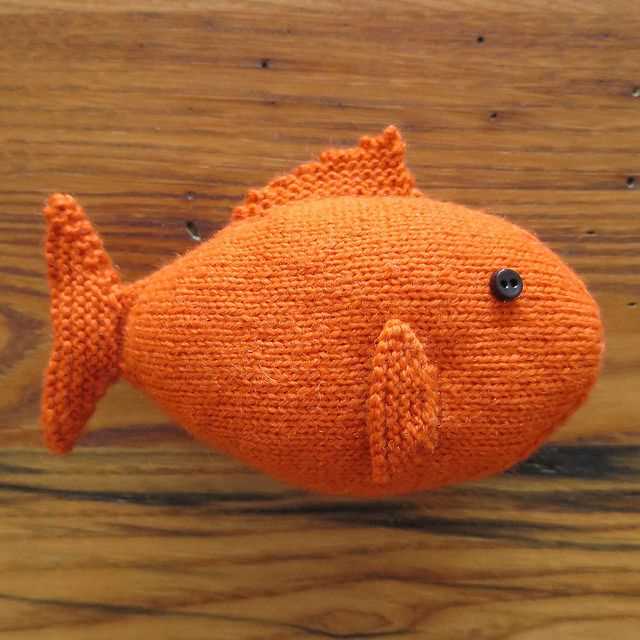
By following these care and maintenance tips, you can ensure that your knitted fish toy remains clean, safe, and enjoyable for your furry friend. Remember to regularly clean, store properly, and inspect for any damage. With proper care, your knitted fish toy can provide hours of joy and entertainment for your cat.
Q&A:
Where can I find a free knitted fish toy pattern?
You can find a free knitted fish toy pattern on various websites that offer knitting patterns for free. Some popular options include Ravelry, Knitty, and LoveKnitting.
How difficult is it to knit a fish toy?
The difficulty level of knitting a fish toy can vary depending on the pattern you choose and your knitting skills. Some patterns may be more advanced and require knowledge of certain techniques like colorwork or shaping. However, there are also simpler patterns available for beginners.
What materials do I need to knit a fish toy?
To knit a fish toy, you will need yarn in various colors, knitting needles in an appropriate size for your yarn, a tapestry needle for sewing the toy together, stuffing for filling the toy, and any additional embellishments you may want to add like safety eyes or decorative buttons.
Can I customize the knitted fish toy pattern?
Yes, you can definitely customize the knitted fish toy pattern to your liking. You can choose different colors for the body and fins, add stripes or other designs, or even modify the size of the toy. Knitting is a flexible craft that allows for creativity and personalization.